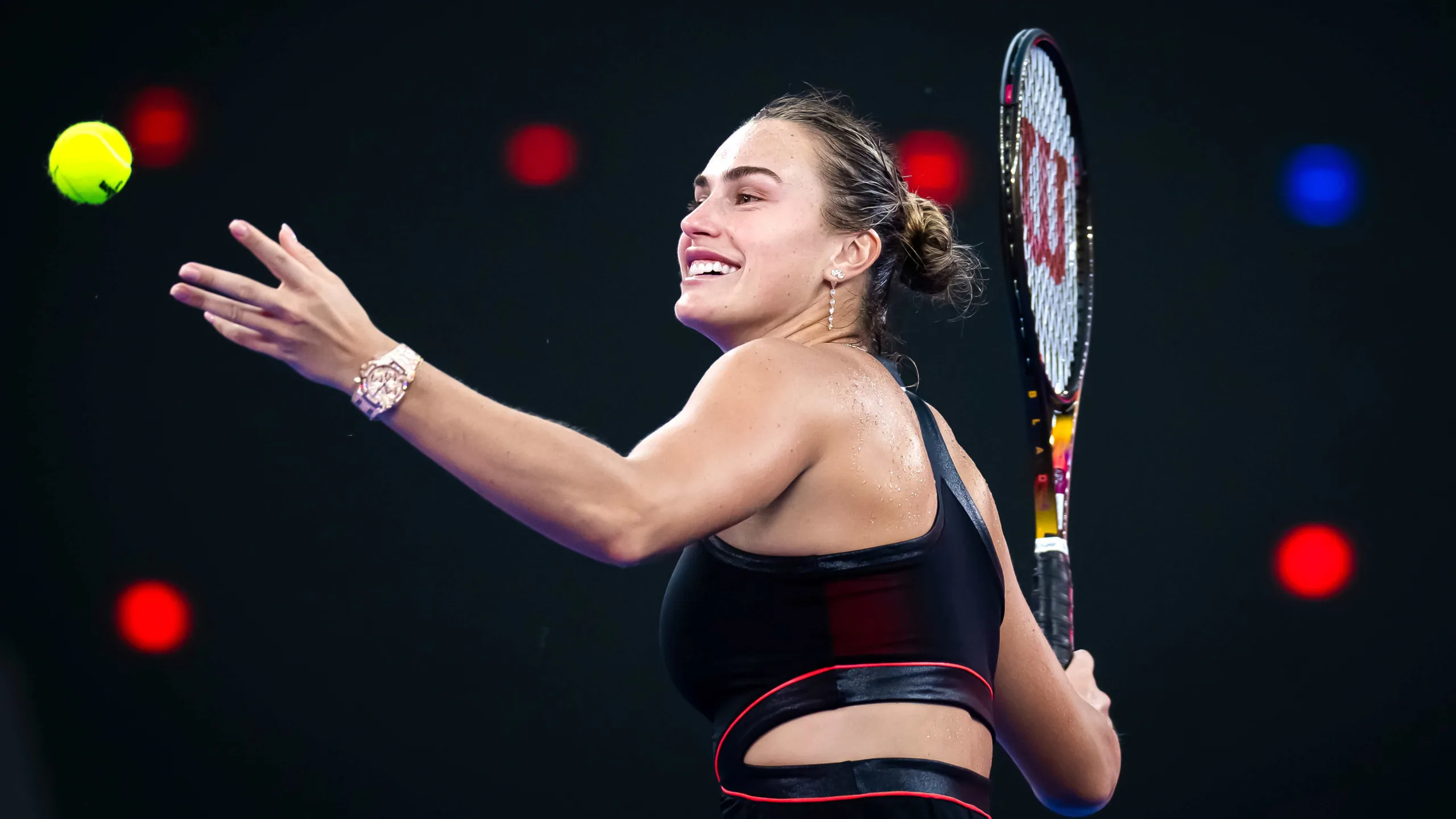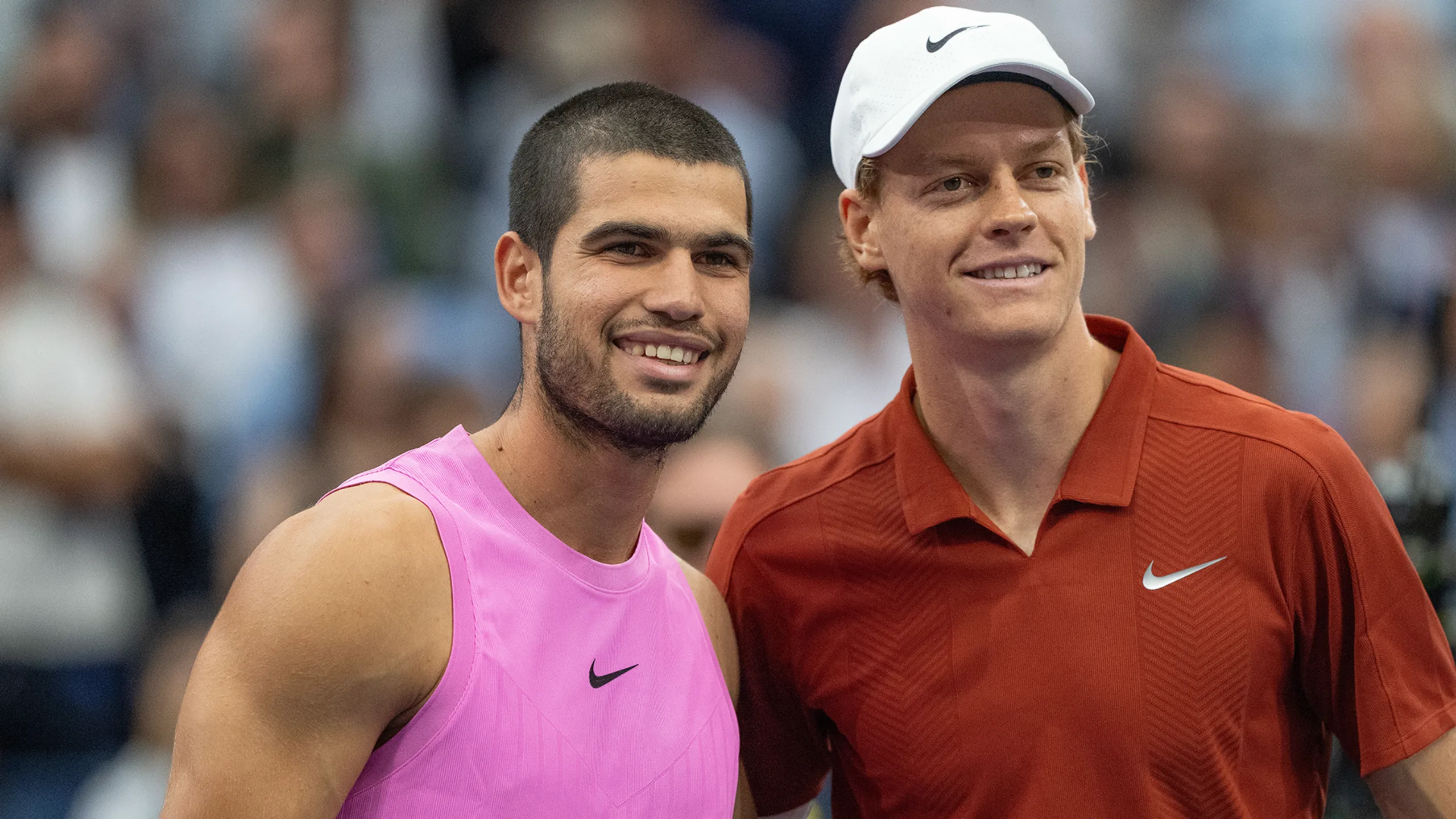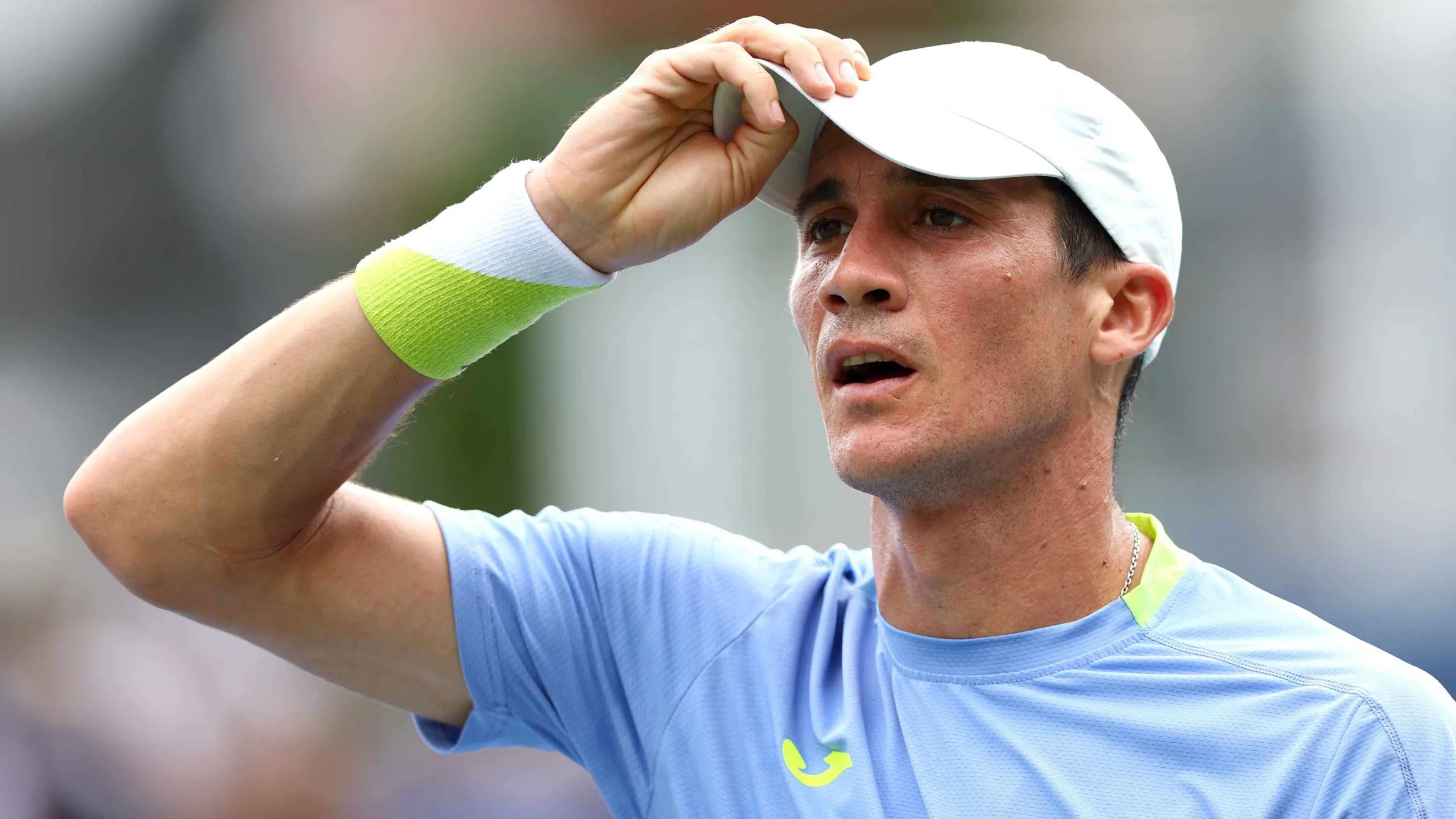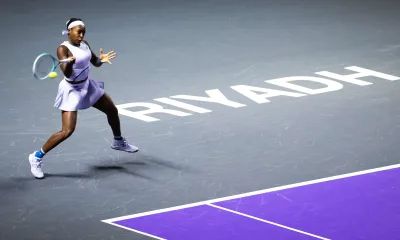Grand Slam US Open WTA
Pegula regroups off court and marches into US Open quarterfinals
Pegula battled midseason doubts, found clarity off court, and reached the US Open quarterfinals….

Jessica Pegula arrived at the final major of the season carrying summer frustrations but has steadily repaired her form en route to the quarterfinals, not dropping a set in Flushing Meadows. At her pre-tournament news conference she summed up her feelings plainly: “Really excited to be back,” the 2024 finalist said last Friday, fresh off a run to the semifinals in the revamped mixed doubles event. “Excited to get going here.”
A week later the No. 3 seed offered a more candid assessment of her preparation. “I felt terrible,” the No. 3 seed confessed on Sunday. “I had a practice Wednesday, and I literally—I think I hit with [Aryna] Sabalenka. She killed me. I was playing terrible.
“Then we went out for a second hour, and I stopped like halfway through the hour and was, like, ‘I’m done, like, this isn’t good. I don’t know why I’m out here practicing.’”
Pegula’s form last summer was impressive: she won a WTA 1000 title at the National Bank Open and reached back-to-back finals in Cincinnati and the US Open, falling only to Sabalenka in those matches. This season she added a third title in Bad Homburg but then lost in the first round at Wimbledon. The run of results that followed left her without consecutive hard-court wins entering the US Open, with three-set defeats by Leylah Fernandez, Anastasija Sevastova and Magda Linette.
The switch from mixed doubles back to singles compounded the challenge. “It was hard, because that was the day after the mixed finish, so we were switching to different balls, and I was a little frustrated,” Pegula explained. “The day was really cold and windy. I was, like, ‘Yeah, I’m done for today. So, I kind of walked off the court, like, not very happy.’” She and friends then tried an escape room to shift perspective. “I was feeling like, I need to just chill and stop getting so frustrated and overthinking all these practices,” Pegula reasoned.
That reset has coincided with clinical singles play in New York. After a 6-1, 6-2 victory over Ann Li she said, “Very good match I think for me today. Probably the best match, honestly, I’ve played since, like, before Wimbledon I feel like from the start to finish. So that was encouraging. I was just hitting the ball, doing everything well, executing my strategy very well and, yeah, got through it pretty quick.”
The win was her 41st of the year, and Pegula credited a mid-career overhaul of fitness and nutrition following hip surgery for her current consistency. “Everyone asks how I’m so consistent,” mused Pegula. “It’s because I’ve been able to stay relatively healthy and been able to play a lot of tennis.
“That was always my issue when I was younger is I couldn’t stay healthy…After my hip surgery, I definitely had kind of this, like, awakening moment where, one, rehab sucks and I was, like, ‘I cannot do this again. I have to do everything in my power to stay healthy, or else I’m never going to give myself a chance to go out there and compete.’
“So, I really reworked my fitness, my nutrition. It wasn’t that I was doing anything wrong before. I don’t think I was the most professional in the sense that I didn’t understand, like, all of the things I had to be doing or needed to be doing…Nowadays you see 13, 14-year-old girls. It’s still instilled. They have a whole team. They have a physio. They have rehab. They have programs. I don’t know. I missed that gap or window or whatever it was! I just didn’t realize how much more I could be doing.
“So, I definitely kind of had a rude awakening after that to be, like, okay, I really need to focus on this and invest in myself.”
Grand Slam Player News WTA
Sabalenka Clinches 2025 Year-End No. 1 After Dominant, Consistent Season
Sabalenka ends 2025 as year-end No. 1 after a season with four titles and relentless consistency. In

Aryna Sabalenka has secured the 2025 year-end WTA No. 1 ranking, regardless of her result at the WTA Finals in Riyadh. Having finished 2024 at No. 1 as well, she becomes the 13th woman in WTA rankings history to end consecutive seasons at the top.
Sabalenka’s 2025 campaign combined peak moments with relentless consistency. She captured four titles, including the fourth Grand Slam title of her career at the US Open. She also reached four additional finals, among them two major finals at the Australian Open and Roland Garros.
Her form across the season was remarkably steady. Sabalenka advanced to the quarterfinals or better at 13 of the 15 tournaments she played, a run that underpinned her hold on the top ranking from the opening week through the close of the year.
That uninterrupted stretch at No. 1 places her in an even smaller group. She is the seventh player in WTA rankings history to hold the No. 1 ranking for every week of a calendar year, and only the third woman to do so this century, after Serena Williams and Ashleigh Barty, who achieved the feat twice each.
The combination of Grand Slam success, four titles, multiple major finals and near-constant deep runs made Sabalenka the season’s defining player. Securing the year-end No. 1 spot for a second straight year confirms a period of sustained excellence and adds a notable chapter to WTA history.
Whatever unfolds at the WTA Finals, the statistical and historical landmarks of Sabalenka’s season are already established. She finishes 2025 as the sport’s year-end No. 1, with a set of achievements that underline both peak performance and remarkable consistency.
ATP Grand Slam Roland Garros
Books on Alcaraz and Sinner Clarify a New Chapter in Men’s Tennis
Two books on Alcaraz and Sinner illuminate how their rivalry reshaped men’s tennis in 2024–25. Today

Two recent books arrive at a pivotal moment in men’s tennis, documenting the rapid ascent of Carlos Alcaraz and Jannik Sinner and the rivalry that has defined 2024 and 2025. Mark Hodgkinson’s Being Carlos Alcaraz supplies the biographical detail and environment that shaped Alcaraz, while Giri Nathan’s Changeover examines the rivalry and the broader cultural moment that surrounds it.
Hodgkinson traces Alcaraz from El Palmar to Juan Carlos Ferrero’s academy in Alicante, and highlights formative episodes: the five-year-old who “loved to bash the ball against the backboard” and a lockdown stint at the academy that accelerated his progress. The book also describes Alcaraz’s psychological training. “When they spoke on Mondays, Alcaraz wasn’t allowed to tell Cutillas whether he had won or lost his latest match, only how he thought he had played,” Hodgkinson writes. “Giving attention to the result would have reduced Alcaraz’s tennis to winning or losing, to being a success or a failure, and Cutillas didn’t want that for him.” Hodgkinson adds, “Cutillas was hoping that as a boy, and maybe deeper into his tennis life, he would be less interested in his results than in whether he was improving and meeting the standards he was setting for himself.”
Nathan’s Changeover is more literary and frames the players within the modern rivalry narrative. He writes that Alcaraz’s game “combined so many traits that didn’t belong together into a single psychedelic point.” Nathan also offers a vivid aside describing Daniil Medvedev as “the expansive plane of his forehead, those cunning beady eyes, the physiognomy of a supervillain plotting to take down the power grid.”
Both books contrast the two men’s temperaments and origins. Sinner’s upbringing in Sexten and his late shift from skiing to tennis are presented alongside anecdotes about his planning and precision, including the moment he told his coach “to stay f-ing calmer” and then dismissed him. Sinner called it “very, very strange” to come from a skiing village and become a tennis player.
Together the books explain how these players rose out of a long era of stasis at the top and set expectations for what the next phase of men’s tennis might look like.
ATP Grand Slam US Open
Facundo Bagnis begins voluntary provisional suspension after positive test
Facundo Bagnis accepts provisional suspension after positive test for hydrochlorothiazide in August..

Facundo Bagnis has begun a voluntary provisional suspension after testing positive for hydrochlorothiazide, the International Tennis Integrity Agency announced. The 35-year-old Argentine’s positive result came during qualifying at the US Open in August, and the ITIA classified the substance in the category of diuretics and masking agents.
Bagnis lost in the first round of US Open qualifying, a defeat that was his sixth consecutive loss in Grand Slam qualifying matches. He reached a career-high ranking of No. 55 in 2016.
The player was notified of the test result this month and opted to start a provisional suspension last week. The ITIA process allows a provisional suspension to be credited as time served if a later ban is imposed.
In a social media statement, Bagnis denied knowingly taking any banned substance and said he has assembled legal and medical support to pursue a possible cross-contamination defense. He wrote: “I want to be clear, I’ve never knowingly taken anything prohibited, that’s why I’m confident in my innocence and that the truth will come to light and reveal a fair outcome,” Bagnis wrote on Instagram , calling the situation ‘one of the worst moments of my professional career.’
“The news has taken me completely by surprise,” he added. “Since the beginning, I have cooperated with the ITIA and been completely and totally transparent in order to clear everything up as quickly as possible.
“Additionally, I have chosen to accept a voluntary provisional suspension in order to dedicate my full attention to this process and to demonstrate that I have nothing to hide.”
Bagnis said he is working with a team that includes lawyers and a medical toxicologist as he prepares his response to the ITIA. The agency’s announcement confirmed the substance and the provisional suspension but did not detail the next steps in the investigation.
-

 Analytics & StatsATPUS Open2 months ago
Analytics & StatsATPUS Open2 months agoSinner: Predictability Cost Me in US Open Final as Cahill Reveals Djokovic’s Counsel
-

 Analytics & StatsUS OpenWTA2 months ago
Analytics & StatsUS OpenWTA2 months agoAfter the US Open: Six WTA takeaways from the 2025 tournament
-

 Analytics & StatsFinalsWTA2 months ago
Analytics & StatsFinalsWTA2 months agoCan Iga Swiatek Overturn Aryna Sabalenka for 2025 Year-End No 1?











